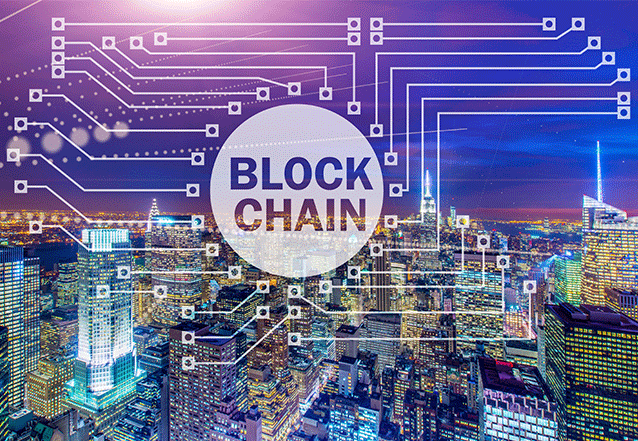
Blockchain: Potential Opportunities for Career Colleges
By Nicolas E.M. Michiels, Principal and Olivia O’Hea, Summer Associate, Powers Pyles Sutter & Verville PC
Blockchain may be best known as the financial technology underpinning the cryptocurrency Bitcoin. So, why should the education industry care about blockchain? As explained in this article, the recent boom in credentialing creates a need for students to document, verify, and share credentials with employers in real-time.1 It can be difficult to coordinate this information when the credentials span across various postsecondary institutions, employers, and sector-specific learning opportunities, such as apprenticeships.2 Blockchain not only provides a way to store all of this information, but it can also protect against credential fraud and reduce organizational workload verifying the credentials.
Blockchain’s three unique strengths – transparency, trust, and tamper resistance – may provide new opportunities for certain career colleges.3
But what is blockchain? A blockchain is a type of database that is created from a record of chronological transactions, similar to a financial ledger.4 Each new piece of data, the “block,” is linked to a previous piece of data, forming a “chain” of tamper-proof records. Within this chain, data can be added and submitted at any time, and the new information is verified and validated by the other blocks on the chain. This chain allows information to be verified without a mediator, and it is transparent to every user on the blockchain.5 Given its decentralized structure, Blockchain data is nearly impossible to tamper with, and any attempted change would be detected and denied by the rest of the chain.
Blockchain has been used to support trillions of online transactions in industries such as banking, e-commerce, and health care.6 Unlike typical cloud-based storage, which stores student information on one computer, blockchain provides a decentralized storage system that is accessible to all devices on the chain.7 This gives users more autonomy over their data by putting the data directly in their hands, often via a phone or laptop, rather than relying on a centralized management system. It also means that if one server fails, the data is still secure and accessible.
This article explores the application of blockchain technology to postsecondary institutions. First, we report on the U.S. Department of Education’s (ED) efforts to study blockchain and assess how it can be used by the education sector. Second, we consider the opportunities and challenges for blockchain in a higher education setting. Finally, we discuss specific ways career colleges could leverage blockchain technology.
I. The U.S. Department of Education’s blockchain initiatives
ED recently created the Education Blockchain Action Network, a platform where educators, administrators, and technology developers can contribute to open source project development on blockchain in education.8 This Network is designed to crowdsource blockchain solutions for today’s education issues. ED’s Office of Educational Technology also has published a series of blog posts on blockchain for educators,9 and it created a three-part webinar series on blockchain’s broader implications for education.10
From there, ED funded the Education Blockchain Initiative (EBI), a two-year initiative designed to “help identify and evaluate ways that blockchain technology can improve the flow of data among educational institutions and employers while empowering individuals to translate educational outcomes into economic opportunity.”11
The American Council on Education (ACE) manages EBI, and it recently released a report detailing the uses, challenges, and considerations for incorporating blockchain into education systems.
Researchers interviewed 40 institutions, implementers, and experts in blockchain and found 71 active efforts to utilize blockchain in education, including pilot projects and attempts to add blockchain-related functionality to existing platforms. The majority of the efforts were related to higher education and the workforce, specifically the use of blockchain to verify academic and work credentials. The report identified three key growth opportunities for blockchain in education: personal data agency, long-term documentation of student credentials, and the creation of a connected network of learners, educators, employers, nonprofits, and government agencies.12 In addition to the EBI report, ACE launched the Blockchain Innovation Challenge, which will solicit project applications and select three winners to pilot their own blockchain projects.13
ED and ACE’s blockchain efforts are guided by three primary questions:
- What are the policies that will impact or be impacted by a student-owned, blockchain-based learning records infrastructure?
- How can education stakeholders develop a consensus on a set of open standards and practices that will ensure the flexibility and interoperability of blockchains used for digital credentialing?
- What principles should we apply to the design and implementation of blockchain-based credentialing systems to ensure social mobility and individual protections, especially for currently disadvantaged populations?14
II. Opportunities and challenges incorporating blockchain into education
The first opportunity blockchain presents is one of its most celebrated features – personal data agency. Currently, individuals need to rely on past institutions, such as a former employer or postsecondary school, to prove their education or workforce records to a potential employer. This data is often stored on servers at the institutions, and it can be changed or deleted without the knowledge of individuals.15 However, with a blockchain system, students would be able to access, share, and potentially add information to the blockchain without relying on a centralized control or management system.16 This may look like a student sharing her transcript with an employer in real-time and bypassing the bureaucratic process of ordering a transcript from her postsecondary institution. Or it could allow a student to verify her diploma if her postsecondary institution shuts down. Because of the unique way a blockchain is created, it gives students agency over their personal information without sacrificing verifiability for employers.17
The second major opportunity for blockchain is its ability to meet the needs of an increasingly online educational environment – a modality shift that has accelerated during the coronavirus pandemic. According to Ted Mitchell, President of ACE, “[i]n the wake of the COVID-19 crisis, learners will be more mobile, moving in and out of formal education as their job, health, and family situations change… [and] they will need consistent ways to document their learning and bring their records with them.”18 Blockchain can provide a technological foundation to help displaced workers or students leverage their skills and credentials into new education and career opportunities. As schools consider whether to provide instruction online or in person, or even whether to remain open, blockchain provides students assurance that their achievements at an institution will be documented and accessible.19
Despite these opportunities, there are challenges to the integration of blockchain into education. Presently the technology is not widely used, understood, or trusted.20 Because the technology is still relatively new, it can be costly to implement.21 This gap between technology development and technology utilization can make blockchain an inefficient system to implement.
A second challenge, which is linked to underutilization, is the lack of standards or best practices for postsecondary institutions using blockchain. ED and ACE are working to develop these standards, but they are not expected until 2021.22 Doug Lynch, a professor at the University of Southern California’s school of education, summarizes the questions around governance: “Who sets the rules, and how do they set the rules in a hugely politicized system where it’s all about control? And then, to what benefit?”23
Finally, the Family Educational Rights and Privacy Act (FERPA) presents a formidable challenge to blockchain implementation.
Any blockchain system that uses data from schools that receive federal educational funding may be subject to FERPA.
ED has confirmed that, due to FERPA, student consent generally is required to facilitate data sharing on the blockchain.24 Schools may obtain consent via a traditional consent form that is presented to the student upon enrollment. Alternatively, schools may obtain consent through a “dynamic consent” process that presents requests for disclosure in real time, identifies the specific purpose of the disclosure and the recipients of the data, and can be administered via an online process (such as a mobile application or “app.”25 FERPA’s consent regulations were issued decades before the advent of blockchain, and so institutions should confer with counsel when designing consent processes for disclosures through blockchain.26
As with all emerging technologies, blockchain implementation presents challenges for institutions. However, some of these challenges could eventually be outweighed by the benefits of adopting an adaptable and transparent blockchain system for maintaining student records.
III. Blockchain options for career colleges
A career college considering blockchain should ask two questions: first, which blockchain system should it adopt, and second, how will it use that system?
There are four blockchain types: (1) an open, public, permissionless model, (2) an open, public, permissioned model, (3) a consortium model, and (4) a private, permissioned model.27 Generally speaking, these models exist on a continuum of most open to most closed, with the first option – open, public, permissionless – representing a system in which the blockchain is visible to the public, although the data remain encrypted. This model was popularized by cryptocurrencies like Bitcoin, and it allows everyone to take part in the consensus process. Because they have such a wide network taking part in the verification process, public blockchains are generally considered the most-tamper proof. Yet FERPA prevents an institution from adopting a fully public blockchain model. The second option – open, public, permissioned – is still visible to the public, but only authorized participants can update or add transactions to the blockchain.
The two closed options – the consortium model and the private, permissioned model – require individual participants to verify their identity and be approved by other members on the blockchain. Under a consortium model, only authorized participants can update or add to the blockchain, similar to multiple banks operating a shared financial ledger. The most closed model – a private, permissioned model – allows only the network operator to update or add data to the blockchain. This model is analogous to an internal bank ledger shared between a parent company and its subsidiaries.
Private models are generally more advantageous for postsecondary institutions because they are cheaper to process and maintain than public models.
However, because the model is private, the integrity of the blockchain is tied to the integrity of the institution. Some experts recommend the consortium model for higher education because it has public and private components. That is, only those on the blockchain could review and change data, and yet the data management would not be too centralized and dependent on the institution.
Under a consortium model, for example, a student could be notified via a mobile application of a pending request for her information to be shared. She could then view the data the school is proposing to disclose, and, if she agrees to the release of data, she could quickly and easily consent to the disclosure using a verifiable digital signature.28
After deciding which blockchain model to adopt, postsecondary institutions should consider how they will integrate the model into their system. While some institutions have replaced existing data management systems with blockchain completely, ACE recommends that smaller institutions use blockchain to enhance their current data management system, rather than replace it. One such enhancement could be the adoption of Universal Learner Wallets, a type of digital wallet where students can store traditional school documents, employment records, apprenticeship information, online course milestones, and even documentation regarding workshops or continuing learning opportunities.29 Through this type of digital wallet, employers could see a full assessment of an applicant’s educational experience, work history, and strengths in one, centralized location.
Blockchain also could be used to facilitate partnerships between private business and online courses by creating a pipeline for employment. Students would complete special courses recommended by employers and, upon completion, add the credential to their wallet. This allows students to form a relationship with employers in their industry and demonstrate their sector-specific experience and knowledge. Not only would this give employers access to applicants with the skills needed for positions, it might also make students more competitive in the job market.30 And that, of course, is the mission of a career college.
References
- Jeffrey Lindenmoyer & Mary Fischer, Blockchain: Application and Utilization in Higher Education, 19 Journal of Higher Educ. Theory and Practice 71, 72 (2019). A 2019 analysis of the workforce-training landscape identified 738, 428 unique credentials used in labor market decision-making, which includes everything from credit-bearing degrees to certificates to apprenticeships.
- Id.
- Danielle Yardy, Blockchain in Brief: Six Ways it can Transform Higher Education, EAB (Jan. 23, 2018), https://eab.com/insights/blogs/it/blockchain-in-brief-six-ways-it-can-transform-higher-education/.
- Privacy Technical Assistance Center U.S. Department of Education, What is a Blockchain? (2019), https://tech.ed.gov/files/2019/06/Blockchain_PTAC_6-19_print.pdf.
- How Can Blockchain Play a Role in Learning Continuity? A Non-Technical Introduction, Department of Education Office of Education Technology (April 22, 2020) (webinar hosted by Office of Education Technology, American Council on Education, Dallas County Community Colleges District, and Open Works Group), https://medium.com/designing-the-future-of-education-and-workforce/how-can-blockchain-play-a-role-in-learning-continuity-50a96b7d46ba.
- Kerri Lemoie & Louis Soares, Connected Impact: Unlocking Education and Workforce Opportunity Through Blockchain 1, 2 (2020).
- Lindenmoyer & Fischer, supra note 1 at 72.
- Education Blockchain Action Network (2019), https://usedgov.github.io/blockchain/about.
- Designing the Future of Education and the Workforce (2020), https://medium.com/designing-the-future-of-education-and-workforce.
- Data Transfer in the Larger Education Ecosystem, U.S. Department of Education (June 2020), https://studentprivacy.ed.gov/resources/data-transfer-larger-education-ecosystem.
- Education Blockchain Initiative (2020), https://www.acenet.edu/Research-Insights/Pages/Education-Blockchain-Initiative.aspx.
- See Lemoie & Soares, supra note 6.
- Education Blockchain Initiative, supra note 11.
- Blockchain in Education, Office of Educational Technology, https://tech.ed.gov/blockchain/ (last visited July 24, 2020).
- Lemoie & Soares, supra note 6 at 9.
- Lindenmoyer & Fischer, supra note 1 at 72-73.
- How Can Blockchain Play a Role in Learning Continuity? supra note 5.
- Lemoie & Soares, supra note 6 at vi.
- See id.
- Id. at 25.
- Lemoie & Soares, supra note 6 at 25, 26.
- Id. at 6.
- Brian Bradley, Does Work on a ‘Learning Credential Blockchain’ Have Implications for K-12?, Education Week (Dec. 6, 2019), https://marketbrief.edweek.org/marketplace-k-12/work-learning-credential-blockchain-implications-k-12/.
- Data Transfer in the Larger Education Ecosystem, supra note 10.
- Credit Inoperability and Blockchain Solutions: Considerations for Privacy and Security of Student Information, U.S. Department of Education (May 2020), https://studentprivacy.ed.gov/resources/credit-interoperability-and-blockchain-solutions-webinar (describing consent options for blockchain systems).
- Students have a right to file a complaint with ED if they believe their rights under FERPA have been violated. See Nicolas E.M. Michiels, Department Announces New Approach to FERPA Enforcement, Powers Pyles Sutter & Verville PC (Feb. 1, 2019), https://www.powerslaw.com/department-announces-new-approach-to-ferpa-enforcement/ (providing further information on FERPA enforcement).
- Lindenmoyer & Fischer, supra note 1 at 74-78.
- ED recommends all institutions adopt a consent-based model to avoid FERPA violations, and it also recommends institutions consider relevant state privacy laws, which may be implicated by adoption of a blockchain system. See Credit Inoperability and Blockchain Solutions, supra note 25.
- Lemoie & Soares, supra note 6 at 12.
- Yardy, supra note 2.
NICK MICHIELS guides clients through the higher education “triad” so they can focus on innovation and fulfilling their missions.
Since joining Powers in September 2010, Nick has counseled for-profit, non-profit, and state schools, online program management companies, and accrediting agencies regarding the complex regulatory framework governing higher education.
Nick seeks to preserve important relationships while advancing the client’s viewpoint. This philosophy guides Nick as he represents postsecondary schools and third-party servicers in audit and program review proceedings before the United States Department of Education’s Office of Hearings and Appeals, as well as responding to adverse actions taken by accreditation and state education agencies.
Nick helps clients remain current in a rapidly evolving environment by monitoring legislative, regulatory, judicial, interpretive, and other developments on a variety of education issues. In particular, Nick has developed substantial experience in the areas of incentive compensation, state authorization, student privacy (including the Family Educational Rights and Privacy Act), student eligibility, and third-party servicer regulations.
Contact Information: Nicolas E.M. Michiels // Principal // Powers Pyles Sutter & Verville PC // 202-872-6727 // Nick.Michiels@PowersLaw.com // https://www.powerslaw.com/professional/nicolas-e-m-michiels/ // https://twitter.com/Nick__Michiels
OLIVIA O’HEA is a Summer Associate at Powers Pyles Sutter & Verville PC, where she works with the education group. She is entering her third year at Georgetown University Law Center, where she is a Managing Editor for the Georgetown Journal of Legal Ethics, a member of the Appellate Advocacy Division of Barristers’ Council, and a delegate for the Student Bar Association. As a law student, Olivia clerked for the House Judiciary Committee and the U.S. Office of Special Counsel. She graduated from Drake University in 2016 and spent two years working at Pew Research Center before beginning law school.
Contact Information: Olivia O’Hea // Summer Associate // Powers Pyles Sutter & Verville PC

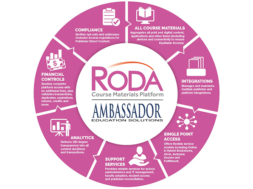

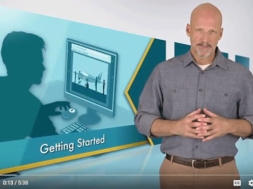

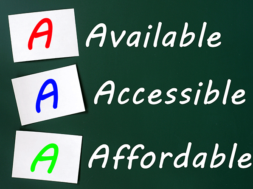

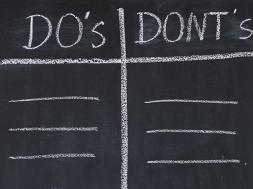



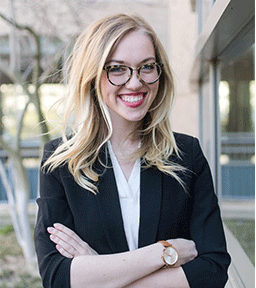
Comment(1)